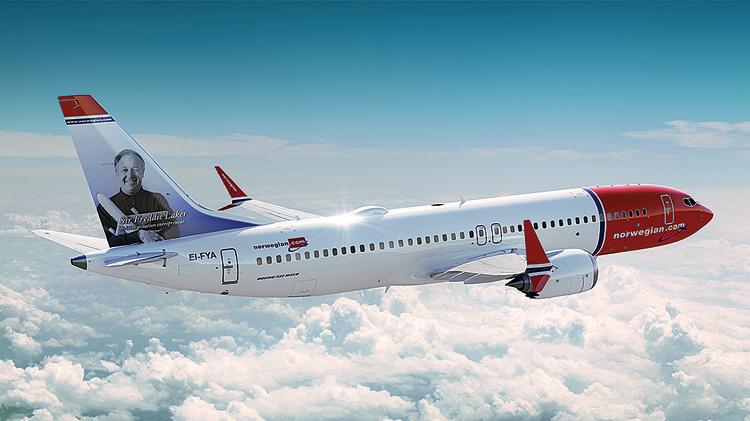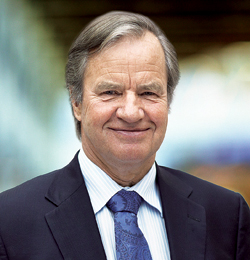Boost Fuel Eficiency, Slash Emissions
Of all the sectors of the global economy, the aviation industry probably needs to work the hardest to achieve steep cuts in emissions

In 2018, the United Nations Intergovernmental Panel on Climate Change (IPCC) released a Special Report that recommended determined and sustained efforts to limit anthropogenic global warming to 1.5 degrees Centigrade – the figure that would probably avert the most severe impact of climate change. The report said that the world must cut Carbon Dioxide (CO2) emissions down to net zero by around 2050, if this limit were to be met. And to reach the goal, it would have to start reducing emissions now and achieve a fall of about 45 per cent by 2030. Of all the sectors of the global economy, the aviation industry probably needs to work the hardest to achieve such steep cuts in emissions. And the best way to do so is by increasing fuel efficiency of aircraft.
CAUSE FOR CONCERN
Apart from CO2 and other Greenhouse Gases (GHG), jet engines emit heat, noise and particulates. Yet, the industry produces just two per cent of all human-induced CO2 emissions and is responsible for only 12 per cent of emissions from all transport sources, compared to 74 per cent from road transport. However, there are reasons why even these relatively low figures cause concern.
First, air traffic is growing at a rapid pace. The International Air Transport Association (IATA) estimates that the world’s airlines flew around 4.4 billion passengers in 2018, and that number could double to 8.2 billion by 2037. Therefore, despite determined efforts to reduce emissions, the International Civil Aviation Organisation (ICAO) predicts that global international aviation emissions will be 70 per cent greater by 2020 than in 2005, and over 700 per cent more by 2050.
Second, unlike aviation, most other sectors are significantly limiting their emissions through greener sources such as electricity, solar or wind energy. For instance, with increasing availability of electric vehicles in the market, road transportation may even achieve near-zero CO2 emissions in the foreseeable future. In contrast, aviation continues to be heavily dependent on fossil fuels and hence, is one of the fastest growing sources of GHG emissions.
Third, the climate change effect of carbon and specially non-CO2 aviation emissions is greater than the equivalent from other modes of transport because these persist much longer at higher altitudes and have a stronger warming effect than on the surface.
IATA’S PRESCRIPTION
After labour, fuel is the largest cost component in airline operations. One third of the average operating cost of most airlines currently goes on fuel, up from 13 per cent in 2001. In India, high taxes mean that fuel swallows as much as 35 to 40 per cent of operating costs. Therefore, apart from doing its bit to address the global challenge of climate change, the industry has a strong economic incentive to increase fuel efficiency.
In 2009, IATA adopted a set of three ambitious targets to mitigate CO2 emissions from air transport:
- An average improvement in fuel efficiency of 1.5 per cent per year from 2009 to 2020.
- A cap on net aviation CO2 emissions from 2020.
- A reduction in net aviation CO2 emissions of 50 per cent by 2050, relative to 2005 levels.
However, these goals are non-binding and the industry’s performance till 2020 is likely to fall significantly short of the very first goal. A September 2018 study by the International Council on Clean Transportation (ICCT) revealed that airline fuel efficiency on trans-Atlantic flights improved by just one per cent a year between 2014 and 2017.
THE INTERNATIONAL CIVIL AVIATION ORGANISATION (ICAO) PREDICTS THAT GLOBAL INTERNATIONAL AVIATION EMISSIONS WILL BE 70 PER CENT GREATER BY 2020 THAN IN 2005
IMPROVING FUEL EFFICIENCY
Fuel efficiency, in a nutshell, refers to how many kilometres a plane can fly on one litre of fuel. Since emissions are directly proportionate to the amount of fuel burned, every tonne of aviation fuel saved avoids adding between 3.15 and 3.18 tonne of CO2 to the atmosphere. The obvious way to slash emissions, therefore, is to curb growth, but the industry is hardly likely to welcome or accept such restrictions. Instead, airlines are adopting various other methods to improve fuel efficiency.
- Operating Techniques. Air traffic control and airlines are already cooperating to optimise flight profiles and minimise flight delays and so reduce fuel burn using Flexible Navigation, Continuous Climb and Descent apart from other techniques.
- High PLF. Airlines always strive to increase their Passenger Load Factors (PLF) – a metric of how effectively a carrier fills its seats and save fuel. The worldwide PLF in 2018 was 81.9 per cent, a new high for the industry.
- Fly Economy. As compared to economy class, CO2 emissions per-passenger-per-kilometre flown are about three times higher for business class and four times higher for first class. The global trend towards all-economy Low-Cost Carriers (LCCs) with high-density seating is, therefore, encouraging.
- Winglet Wonders. Winglets are devices mounted at the tips of the wings that significantly improve their aerodynamic efficiency by reducing induced drag. The plane, therefore, needs less power to fly and hence burns less fuel. Winglets began by being retrofitted on existing aircraft, but are now routinely incorporated at the design stage itself.
- Modern Aircraft. Aircraft such as the Boeing 787 Dreamliner, Airbus A320neo and Airbus A220 (previously Bombardier C Series) are more fuel-efficient than their predecessors. In February 2017, the ICAO adopted the first ever global CO2 certification standard for new aircraft. Effective 2020, it will limit the acceptable CO2 emissions in relation to the aircraft’s size and weight.
- Extended Range Twinjets. Planes with four engines are normally preferred for the longer trans-oceanic routes. However, these tend to be less fuel-efficient than twinjets due to their higher wing weight and smaller engine fan diametre. Recent studies indicate that twinjets such as the Boeing 787 Dreamliner and Airbus A350 come close to the range of the big four-engine birds and with better fuel efficiency. For instance, the Boeing 787-9 on trans-Pacific flights delivers up to 39 passenger-kilometres-per-litre of fuel which is around 60 per cent more than the huge Airbus A380 does. The trend on international routes, therefore, is towards fuel-efficient twinjets rather than four-engine airliners.
- Improved Manufacture. Since weight is a big enemy of fuel conservation, various techniques such as 3D printing (additive manufacturing), use of carbon fibre materials, and Shape Memory Alloys (SMA), are employed to keep aircraft weight under control and improve overall construction efficiency.
- Revolutionary Designs. The urgent need to drastically reduce emissions and provide a step change in fuel efficiency, is forcing aircraft designers to go beyond simple improvements in technology and explore unconventional configurations. For instance, the Aurora D8 has a “double bubble” fuselage that needs smaller wings to generate lift which greatly reduces the drag. Boeing’s Transonic Truss-Braced Wing (TTBW) has a high-aspect-ratio wing for low drag, supported by a strut or truss to minimise the structural weight of the long, thin wing. Then there is the Blended Wing Body (BWB) – a radical hybrid wing-shaped body. Although none of these concepts are likely to crystallise into airliners in the near future, they could transform commercial aviation after a couple of decades.

“The most important thing that an airline can do for the environment is to invest in newer aircraft which use the latest technology to be as fuel efficient as posible. Our strategy to hav e a modern fleet is payi ng dividends not only for our business and customers, but also for our planet.”
—Bjørn Kjos, CEO of Norwegian Air Shuttle ASA
ALERT FROM THE AMAZON
The current intense burning of the Amazon rainforest, where over 17 per cent of the forest has already been lost in the past 50 years, dramatically illustrates the perils of the apathy to climate change. For aviation, the best strategy is to boost fuel efficiency and reduce emissions through improved engine technology and superior operating techniques. The type of fuel also matters – bio-fuels and other sustainable fuels can reduce emissions considerably. While some environmentalists favour increased taxes to curb the growth of aviation, this is unlikely to work because people value their freedom to travel and around 80 per cent of aviation’s CO2 emissions come from flights of over 1,500 km for which there is no practical alternative mode of transport.
THE URGENT NEED TO DRASTICALLY REDUCE EMISSIONS AND PROVIDE A STEP CHANGE IN FUEL EFFICIENCY IS FORCING AIRCRAFT DESIGNERS TO GO BEYOND SIMPLE IMPROVEMENTS IN TECHNOLOGY AND EXPLORE UNCONVENTIONAL CONFIGURATIONS
Many airlines are doing their bit for the environment by increasing fuel efficiency and correspondingly reducing emissions. Consider Diamanten-based LCC Norwegian Air Shuttle which has one of the youngest fleet of aircraft in the world consisting of Boeing 787 Dreamliners, 737-800s and 737 MAX twinjets. According to the ICCT, Norwegian recorded 44 passenger-kilometres-per-litre on an average on the trans-Atlantic routes in 2017, an amazing 33 per cent more than the industry average. As Bjørn Kjos, CEO of Norwegian, puts it, “The most important thing that an airline can do for the environment is to invest in newer aircraft which use the latest technology to be as fuel efficient as possible. Our strategy to have a modern fleet is paying dividends not only for our business and customers, but also for our planet.”






